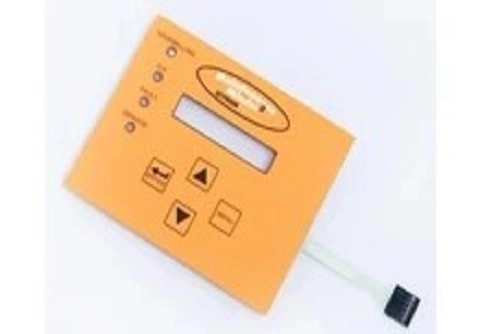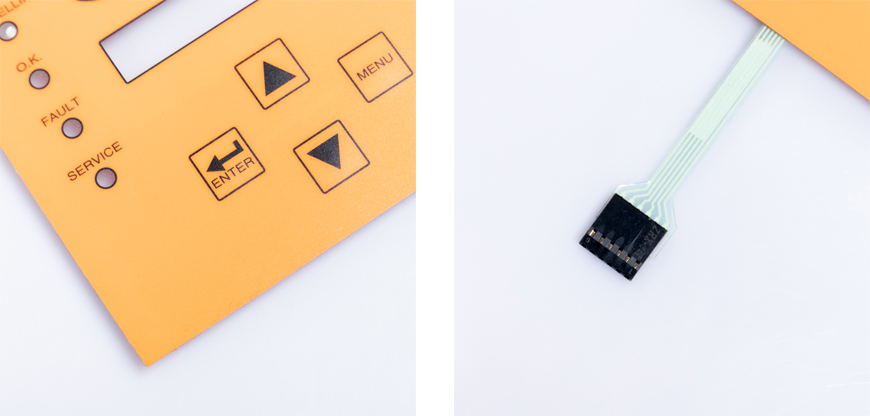
In the fast-paced world of home appliances, the role of technology has become increasingly significant. One such technological marvel that often goes unnoticed but plays a crucial role in our daily lives is the membrane switch. This article will provide you with a comprehensive guide to home appliances membrane switches, exploring their functionality, applications, benefits, and much more.

Membrane switches operate through the use of pressure-sensitive materials that enable electrical contact when a user applies pressure to a specific area on the switch. These switches are made up of multiple layers, with a flexible membrane layer on top, which contains conductive traces. When a user presses a designated area, the conductive traces on the membrane come into contact with a conductive layer below, completing the circuit and triggering the desired action. The flexibility of the membrane provides a tactile response, allowing users to feel the activation, and the design helps in providing a waterproof, space-efficient, and durable interface.
Membrane switches are commonly used in various home appliances, offering an intuitive and reliable control mechanism. Some typical appliances that incorporate membrane switches include:
Microwave Ovens: They are often used for the touchpad interface to control settings such as time, power level, and cooking modes.
Washing Machines: Membrane switches enable the user to select different wash cycles and settings, offering a sleek and easy-to-clean interface.
Coffee Makers: In coffee machines, membrane switches are used for programming brewing times, temperature settings, and other functions.
Smart Thermostats: Membrane switches are used in smart thermostats to adjust temperature settings and configure schedules, providing a responsive and user-friendly experience. These switches are well-suited for appliances because they are durable, resistant to dust and liquids, and provide a smooth, easy-to-clean interface.
There are several types of membrane switches, each designed to cater to specific user needs and preferences. Some of the most common types include:
Tactile Membrane Switches: These tactile membrane switches provide a noticeable tactile feedback when pressed, giving the user a clear physical sensation that the switch has been activated. This feedback is essential for users who prefer to feel the activation rather than just hear or see it.
Non-Tactile Membrane Switches: These switches do not offer any physical feedback when pressed. They are typically used in applications where a soft, quiet, and aesthetically pleasing interface is desired.
Capacitive Membrane Switches: These switches work by detecting the change in capacitance when a user's finger approaches or touches the sensor. They provide a more modern, touch-sensitive experience and are commonly found in devices that require a sleek, advanced user interface.
Each type of membrane switch has distinct features, making them suitable for various applications and user preferences.
When comparing membrane switches to traditional mechanical buttons, several factors highlight why membrane switches are becoming increasingly popular, especially in home appliances:
Durability: Membrane switches are highly durable and resistant to wear and tear. Unlike mechanical buttons, which can experience physical degradation over time due to repetitive pressing, membrane switches are more robust and long-lasting.
Water and Dust Resistance: Membrane switches can be made waterproof and dustproof, making them ideal for appliances exposed to moisture or debris. Traditional buttons often have gaps that can let water or dust in, potentially causing damage.
Design Flexibility: Membrane switches are thin and flexible, allowing for more innovative and compact designs. This makes them suitable for devices with limited space or those requiring a smooth, uninterrupted surface.
Aesthetics: Membrane switches can be designed to look sleek and modern with a variety of finishes, including backlit panels. Traditional buttons, while functional, often appear bulkier and less aesthetically pleasing.
Ease of Cleaning: The smooth surface of membrane switches makes them easier to clean compared to traditional buttons, which may have crevices where dirt can accumulate.
These benefits contribute to the growing adoption of membrane switches in home appliances, providing a combination of functionality, aesthetics, and reliability that traditional buttons struggle to match.
Q: Are membrane switches easy to replace if they get damaged?
A: Yes, membrane switches are relatively easy to replace, making maintenance hassle-free.
Q: Do membrane switches work with touchscreens in appliances?
A: While membrane switches and touchscreens serve different purposes, some appliances may use both for enhanced functionality.
Q: Are membrane switches compatible with all home appliances?
A: Membrane switches can be customized to suit various appliances, but compatibility may depend on specific design requirements.
Q: How long do membrane switches typically last in home appliances?
A: Membrane switches can last for several years, with a lifespan of millions of actuations.
Q: Can I install membrane switches in my existing appliances?
A: Depending on the appliance and design, it may be possible to retrofit membrane switches into existing devices for added convenience.